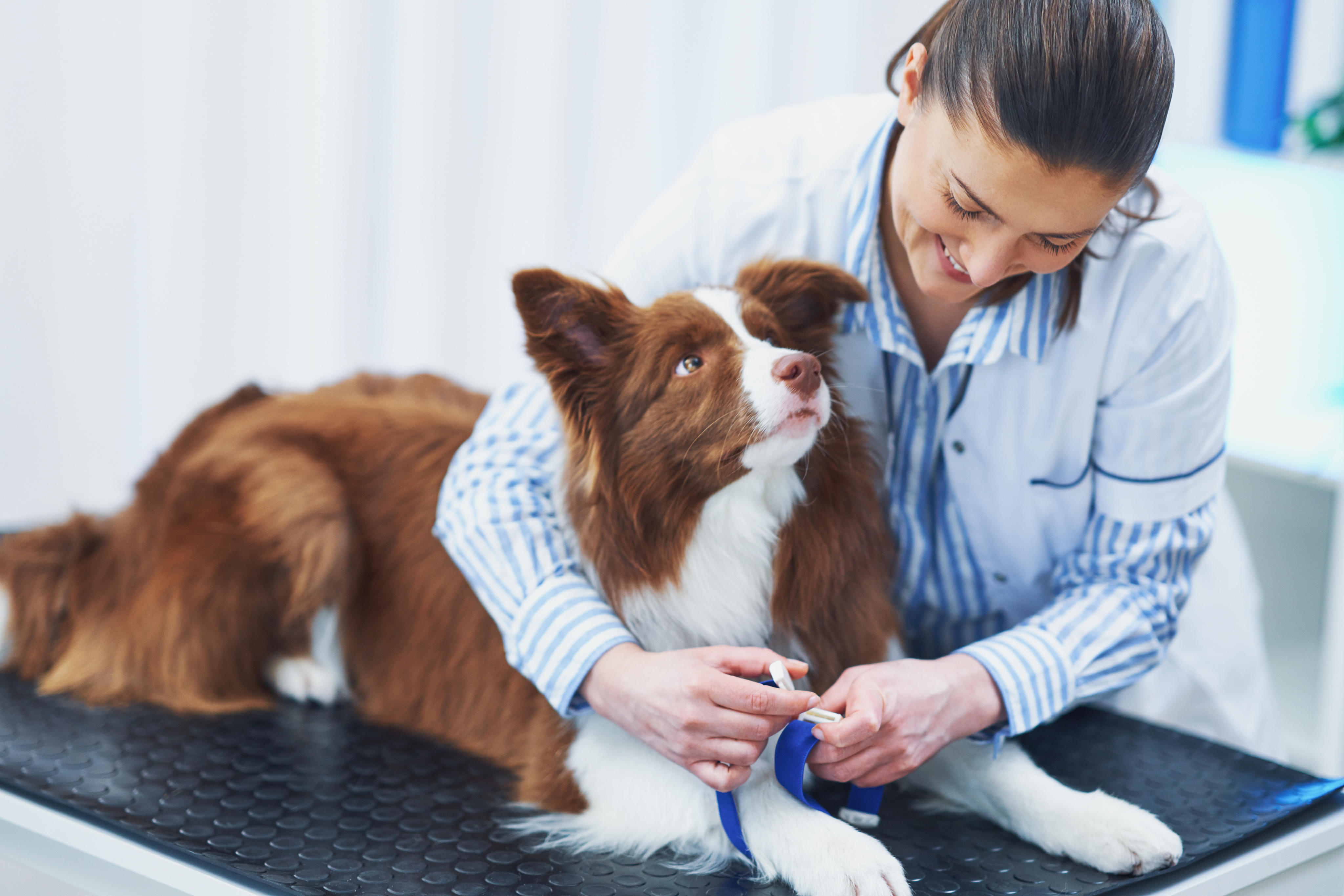Canine Parvovirosis
CPV-2 is a highly contagious disease that attacks the gastrointestinal tract.
Product Description
NOBIVAC® CANINE 1-DAPPv
This product has been shown to be effective for vaccination of healthy dogs 6 weeks of age or older against canine distemper virus, canine adenovirus type 1 (hepatitis), canine adenovirus type 2 (respiratory disease), canine parainfluenza virus and canine parvovirus.
Disease Overview
Canine parvovirus type 2 (CPV-2) attacks the gastrointestinal tract of puppies and dogs. There are 3 variants of the virus, CPV-2a, CPV-2b, and CPV-2c, which evolved only a few years after the first antigenic variants were discovered.
CANINE PARVOVIROSIS FAST FACTS
- The first strains of CPV-2 emerged in the late 1970s.
- Death can occur as early as 2 days after the onset of illness.35
- Canine parvovirus type 2c (CPV-2c) is the most recent variant of canine parvovirus. It was first detected in Europe in 2000 and cases of canine parvovirus associated with CPV-2c in the United States were first confirmed in 2006.
TRANSMISSION
CPV-2 is transmitted by direct and indirect contact:
- Contaminated surfaces
- Food and water bowls
- Collars and leashes
- Hands and clothing of people who touch a CPV-2–infected dog35
CLINICAL SIGNS
- Lethargy
- Loss of appetite
- Fever
- Vomiting
- Severe, and often bloody, diarrhea
DOGS AT RISK
- Young dogs
- Dogs that come from shelters, rescue centers, breeding kennels, or pet stores
- Boarding at a kennel or doggie daycare
- Visiting groomers, dog parks, or engaging with other dogs on a daily basis
- Dogs that live in multiple pet homes
MORBIDITY THREATS
Lymphopenia and neutropenia develop secondary to destruction of hematopoietic progenitor cells in the bone marrow and lymphopoietic tissues.
Infection in utero or in pups less than 8 weeks of age can result in myocardial infection, necrosis, and myocarditis.
Severely affected animals may present signs potentially consistent with septic shock.
SPREADING DISEASE
Canine Parvovirosis is shed:
- In the feces of infected dogs within 4–5 days of exposure
- Throughout the period of illness
- For approximately 10 days after clinical recovery
CPV-2 is one of the most resistant viruses to infect dogs:
- The virus can survive indoors at room temperature for a few weeks
- If protected from sunlight and desiccation, it can persist for many months
DIAGNOSIS
CPV-2 enteritis should be suspected in any young, unvaccinated, or incompletely vaccinated dog with relevant clinical signs.
Over the course of the illness, most dogs develop a moderate to severe leukopenia characterized by lymphopenia and neutropenia.
Merck Animal Health Vaccines
Professional Resources and Educational Materials
Keep your clinic and staff informed and aware of diseases and outbreaks.
View More Nobivac ResourcesDigital Assets
Nobivac® Social Media Kits
Use these ready-to-share posts to educate pet parents and drive business to your clinic for preventative care.
Addressing CIV in Your Clinic
Tips and guidelines for your clinic to prevent and manage canine influenza.
SOP
AAHA Canine Vaccination Guidelines
In-depth information about canine vaccinations and veterinary best practices.
References




 Go To United States
Go To United States Algeria
Algeria Argentina
Argentina Australia
Australia Austria
Austria Bahrain
Bahrain Belgium (Dutch)
Belgium (Dutch) Brazil
Brazil Canada (English)
Canada (English) Chile
Chile Colombia
Colombia Croatia
Croatia Czech Republic
Czech Republic Denmark
Denmark Ecuador
Ecuador Egypt
Egypt Finland
Finland France
France Germany
Germany Greece
Greece Hungary
Hungary India
India Indonesia
Indonesia Iraq
Iraq Ireland
Ireland Israel
Israel Italy
Italy Japan
Japan Jordan
Jordan Kuwait
Kuwait Lebanon
Lebanon Malaysia
Malaysia Mexico
Mexico Morocco
Morocco Netherlands
Netherlands New Zealand
New Zealand Norway
Norway Oman
Oman Panama
Panama Peru
Peru Philippines
Philippines Poland
Poland Portugal
Portugal Qatar
Qatar Romania
Romania Russian Federation
Russian Federation Saudi Arabia
Saudi Arabia South Africa
South Africa South Korea
South Korea Spain
Spain Sweden
Sweden Switzerland (French)
Switzerland (French) Taiwan
Taiwan Thailand
Thailand Tunisia
Tunisia Turkey
Turkey Ukraine
Ukraine United Arab Emirates
United Arab Emirates United Kingdom
United Kingdom Uruguay
Uruguay Yemen
Yemen Global
Global